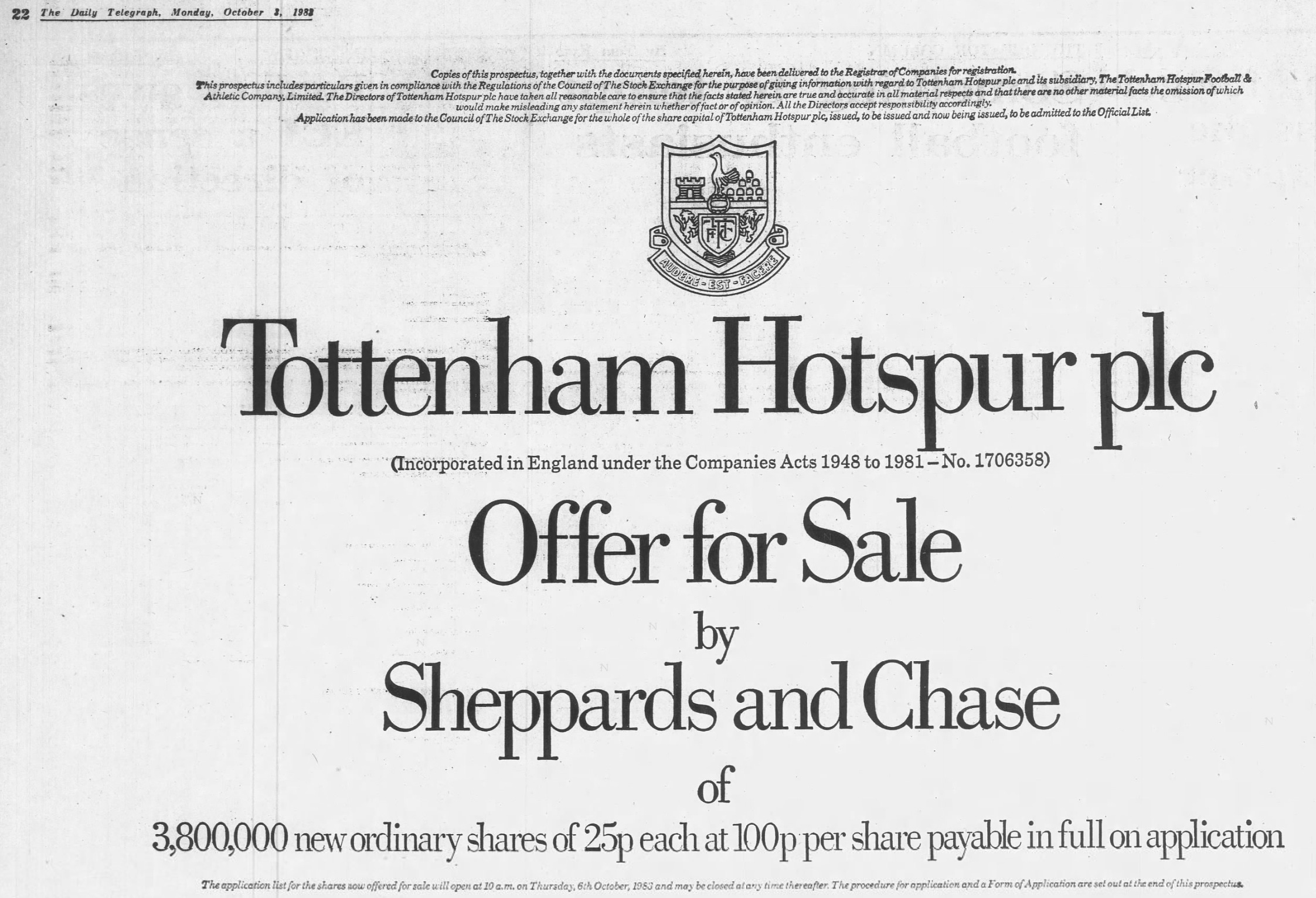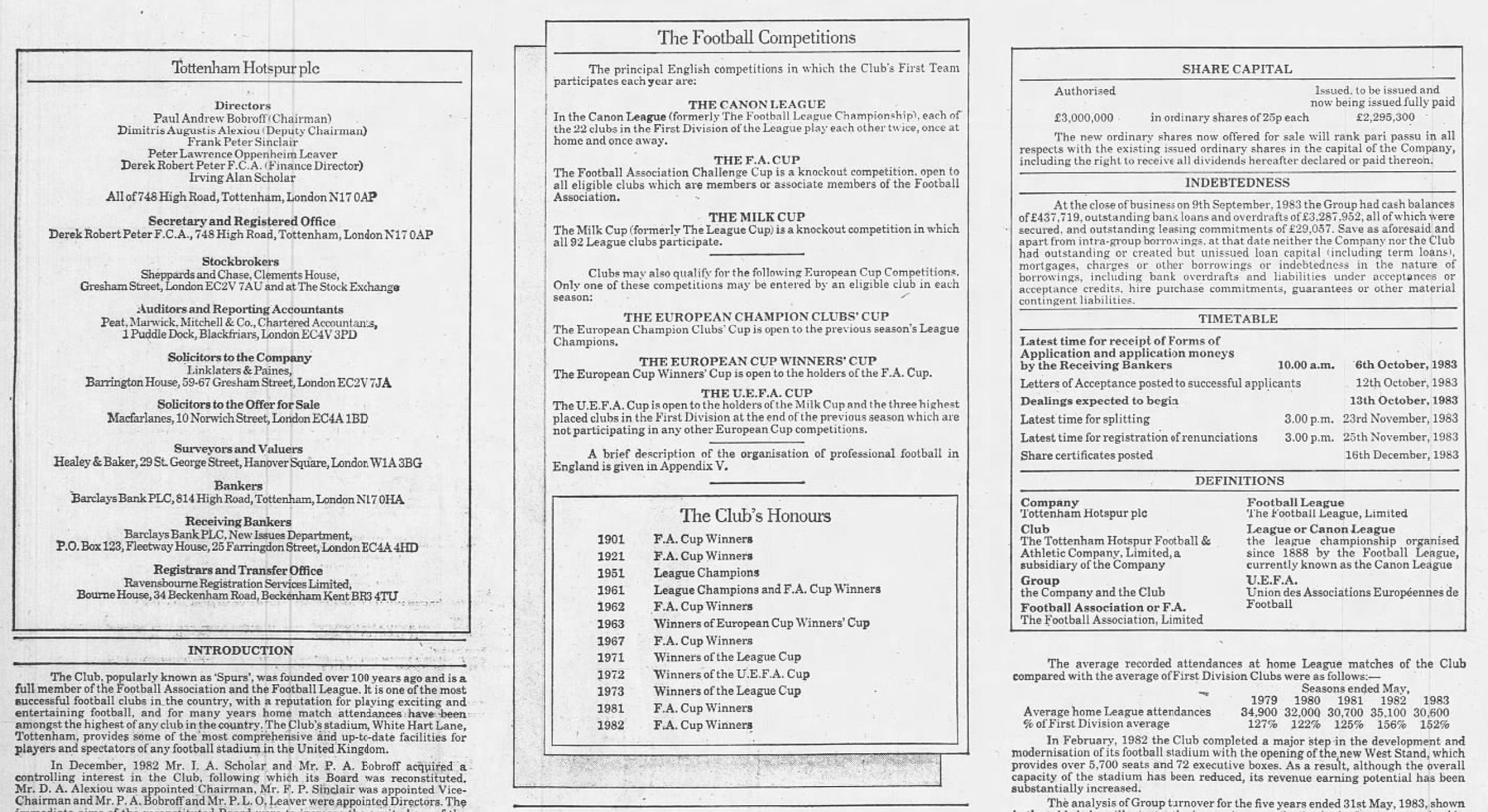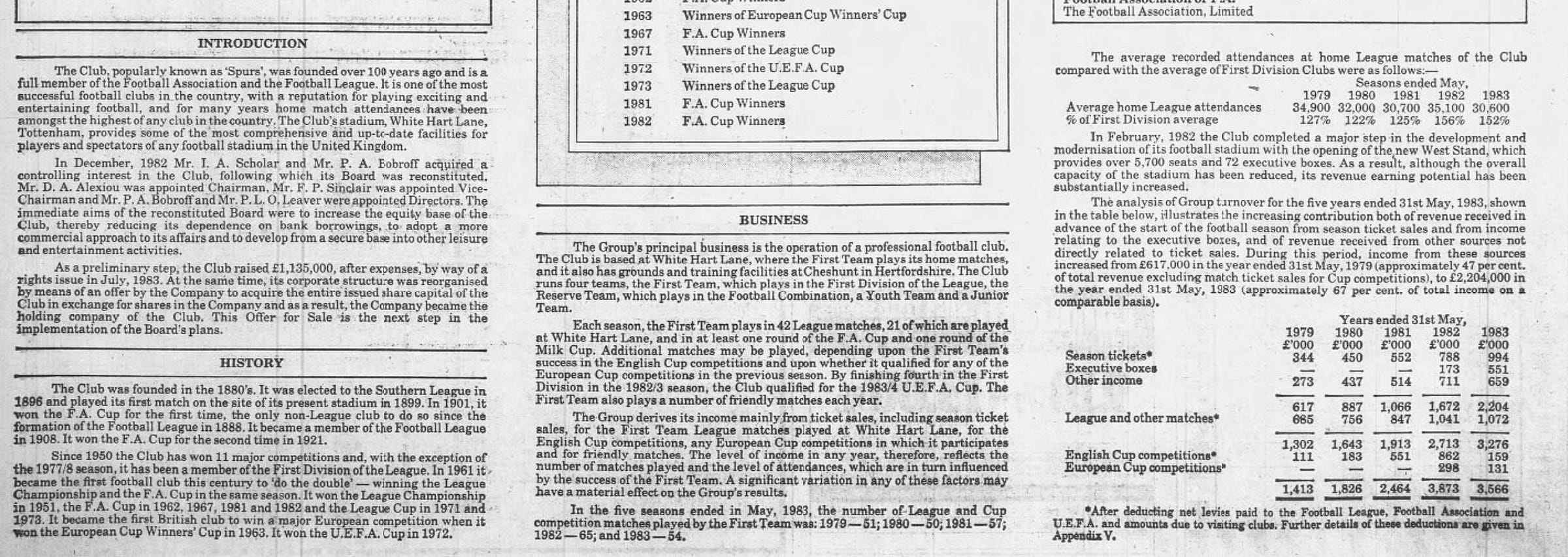Stock in Tottenham
I’ve spent some time over the past few months watching and rewatching the first episode of the 2001 BBC documentary The Men Who Changed Football. Unfortunately, I can only find the first episode on YouTube, and there doesn’t seem to be any good online source for the remaining two episodes.
The first episode is here — and be warned that the audio level is far too low:
There’s really a lot to unpack here, and I plan on going through the history little by little in the coming weeks and months.
In my mind, though, this advertisement really marked the end of the old era and the beginning of the new:
There are a few really interesting things to note here:
If you look closely, you’ll see that attendance had actually fallen. 1982 was a good year for Spurs at the turnstiles, almost certainly because Tottenham finished 4th in 1981-82 and 4th again in 1982-83. Attendance was down in 1983, however, and was down generally at the beginning of the 1980s. I’m guessing a lot of this had to do with the gradual conversion to all seater stands which took place at that time.
Spurs was up front with the reason for taking the team public. The work on the West Stand of old White Hart Lane required the club to take on significant debt — and the hope was that it could raise funds through this public offering and deliver an eventual profit.
Note that television revenue is not listed anywhere. This was back in the old days of the BBC/ITV stranglehold over football on television.
It’s interesting to see the Football League refered to as “The Canon League.” I don’t think I’ve seen that anywhere else.
If The Men Who Changed Football is accurate, this is likely the first step that was taken to bring the business of football in England into the modern business world. Personally, I find this absolutely fascinating, especially considering the history of the sporting landscape in the United States.




